Over the last few years, we have witnessed the beginning of a real space technology revolution called Starlink. Until recently, there were no satellites of this system in orbit. Today there are more than two thousand of them. This is almost half of the total number of active spacecraft.
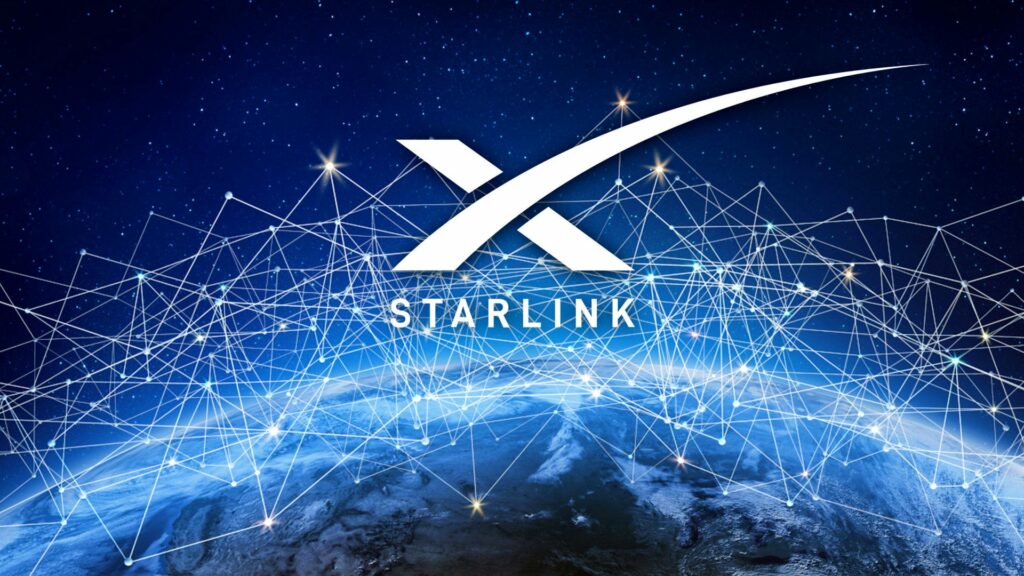
Despite the fact that the system is still very far from completion, it is already functioning and gradually changing our world, in particular helping Ukraine to resist the full-scale Russian invasion. Therefore, we would like to talk about how Starlink is organized, its prospects and competitors.
Starlink architecture
Currently, the architecture of the Starlink system consists of three main components: a grouping of satellites in low orbits, a network of ground stations, and user terminals.
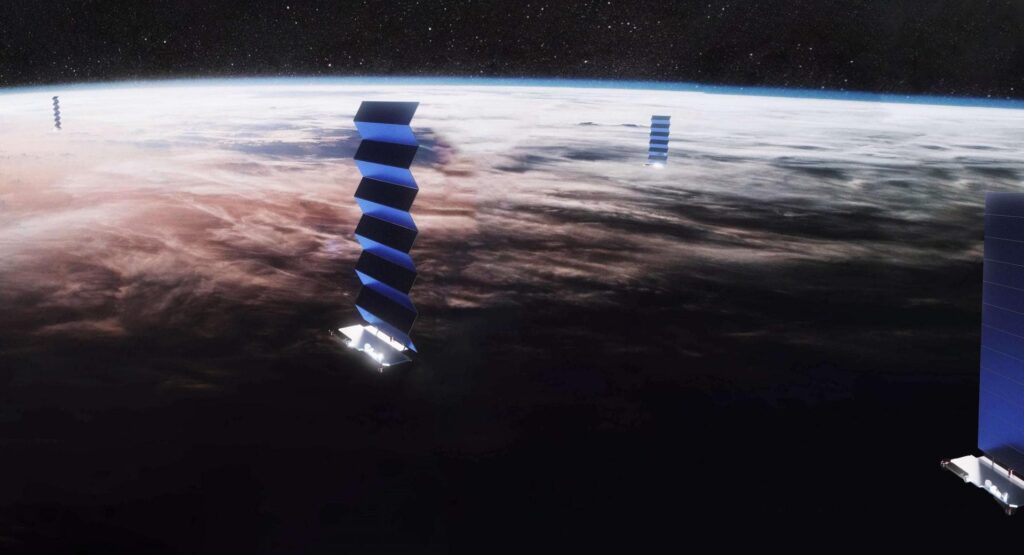
So far, the vast majority of Starlink satellites are located in orbits at an altitude of 540-550 km and an inclination of 53 degrees. This choice is not arbitrary. An inclination of 53 degrees covers the areas where most of the world’s population lives, while the relatively low altitude helps to solve two problems. First, it significantly reduces the signal delay to the end user. Secondly, the low orbit is a kind of natural defense mechanism. Even if it fails, the Starlink satellite will go out of orbit and burn up in Earth’s atmosphere in a few years, reducing the likelihood of it colliding with other spacecraft.
Another key element of SpaceX’s architecture is the ground stations needed to connect users to the World Wide Web. To put it simply: each satellite acts as a repeater, transmitting a signal from the ground station to the user with the satellite terminal and vice versa. This in turn creates some technical limitations. For successful operation, the ground station and the user must be in the field of view of the satellite at the same time. Therefore, the distance between them should not exceed about a thousand kilometers.
However, SpaceX is already working to reduce the system’s dependence on the geographical location of ground stations. The new generation of Starlink devices (v1.5) has a laser communication system. It allows satellites to exchange data with each other, which excludes intermediate ground stations from the chain and removes distance restrictions.
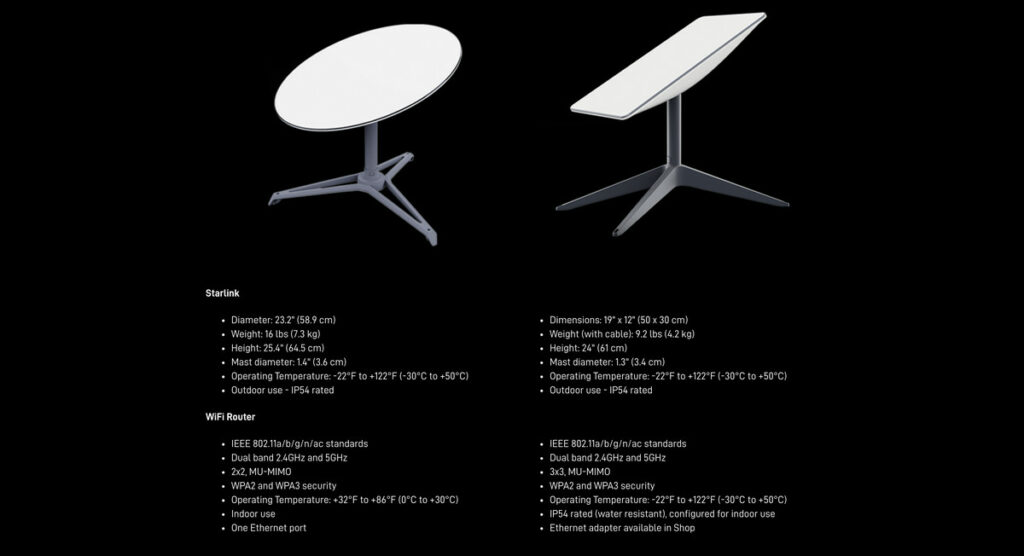
The third component of the Starlink system is user terminals. Their latest modification has a rectangular antenna, weighs 4.2 kg and provides a bandwidth of 1 Gbps. But this is theoretical. As of the end of last year, the average download speed of Starlink was 105 Mbps, the average upload speed was 12 Mbps. As new satellites are launched, SpaceX is gradually increasing these figures.
Starlink satellites and their evolution
Before we start talking about Starlink satellites, it should be noted that, despite the modernity of the system, they have already undergone several modifications aimed at increasing their technical capabilities.
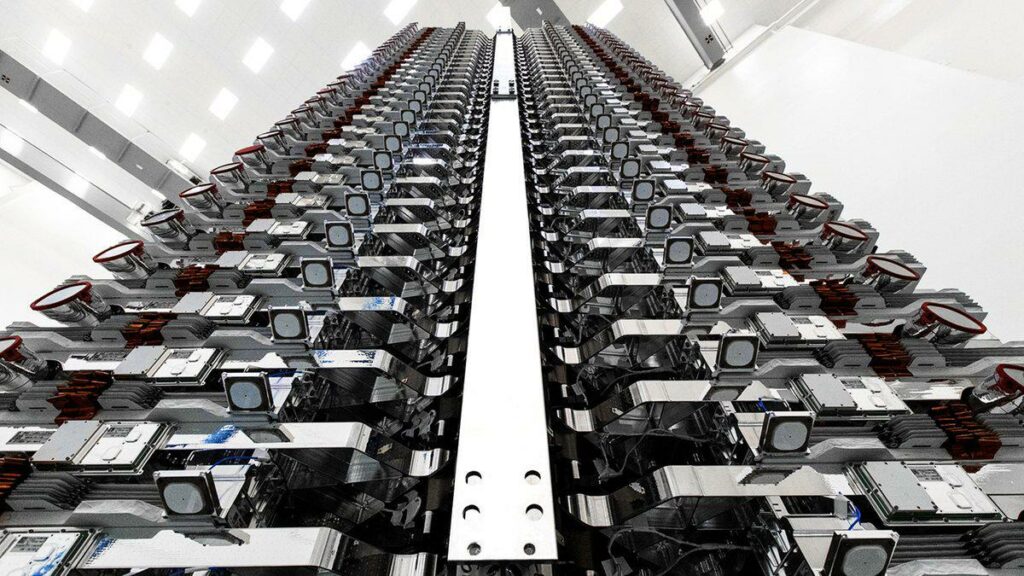
The first generation satellites (v 1.0) weigh 260 kg and are equipped with four phased array antennas operating in the Ku and Ka bands to transmit data to Earth. For maneuvering devices use ionic engines on the Hall effect with krypton as a working mass. They are also equipped with an autonomous navigation system that allows them to perform maneuvers to evade potentially dangerous objects. Later satellites v 1.0 also received special protective visors that reduce their brightness in the night sky.
Last fall, SpaceX began launching satellites of the v 1.5 modification. They differ from their predecessors by the aforementioned laser communication system. Because of it, the devices v 1.5 “gained” about 35 kg compared to v 1.0.
SpaceX engineers are already working on creating satellites for the next version of v 2.0. According to the company, they will have much more technical capabilities than their predecessors. The v 2.0 satellites are expected to be launched into orbit by the new Starship spacecraft.
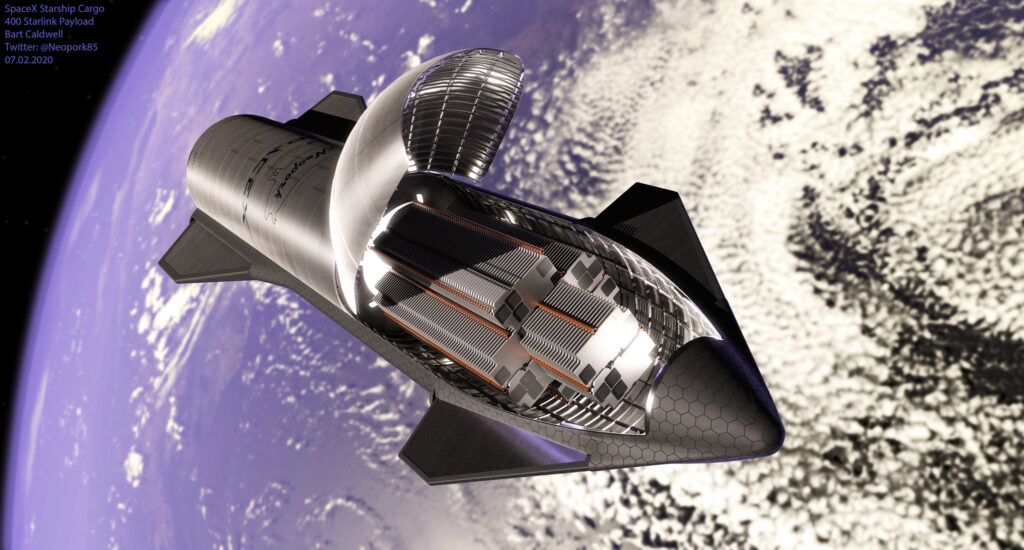
The exact cost of production of one Starlink satellite is kept secret, but according to some estimates, it is about 200-500 thousand dollars per unit. By the standards of the aerospace industry, this cost is revolutionary. The fact is that Starlink became the first truly serial satellites to be produced in factories on an industrial scale. Prior to that, the manufacture of spacecraft actually remained manual labor, which was carried out on individual projects, which largely determined their high cost. But SpaceX has forever changed the rules of the game, showing that the creation of satellites can be mass-produced. Henry Ford did something similar in the early 20th century, using the conveyor belt in factories.
Connection and price for users
Despite global reach, most people of the Earth cannot yet use Starlink. After all, this requires the permission of the country’s authorities to operate the system on its territory. As of April 2022, there were 29 countries on Earth that approved the use of Starlink. These are mainly the countries of North and South America, Europe, as well as Australia and New Zealand.

To connect to Starlink in the country where the authorities have authorized the system, the user must place an order on the official website, make a deposit of $ 99, and then wait for approval of the application.
Initially, the cost of the Starlink terminal was $ 499 with a monthly subscription fee of $ 99. But recently SpaceX has raised prices. The price of the satellite terminal increased to $ 549 for users who have already made a deposit, and to $ 599 for new customers. The cost of a monthly Internet package has been increased from $ 99 to $ 110. SpaceX explained the price increase by high dollar inflation.
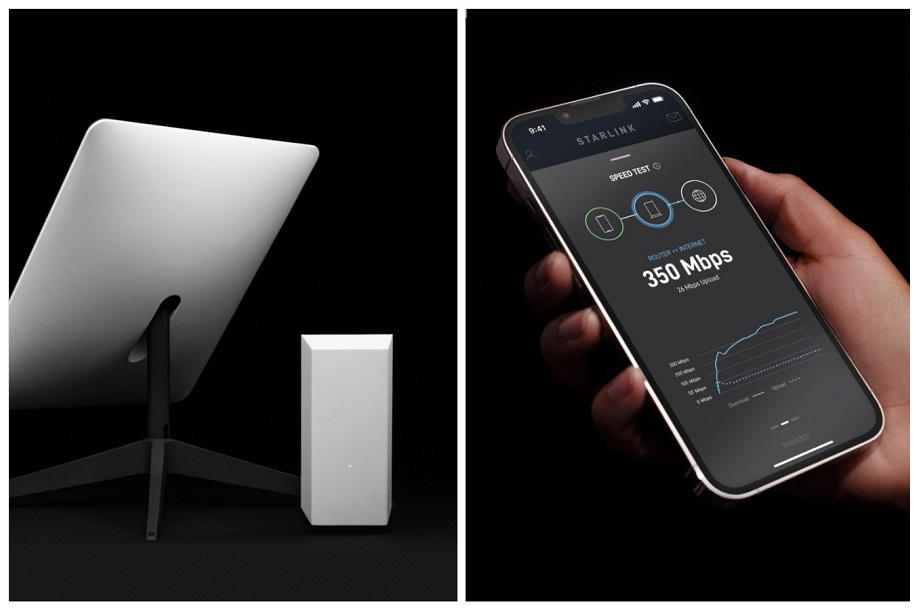
In early 2022, SpaceX also announced a Starlink Premium service for corporate customers. Users of this tariff plan will receive at least twice the speed of satellite Internet with less signal delay. The service will cost $ 2,500 per terminal for a monthly subscription fee of $ 500.
Starlink in Ukraine
After the beginning of the large-scale Russian-Ukrainian war, SpaceX began supplying Starlink terminals to Ukraine. To date, their number has exceeded 5,000. They are used by government agencies and critical infrastructure. In combat, Starlink often remains the only means of communication with the outside world, ensuring fast and reliable data transmission.
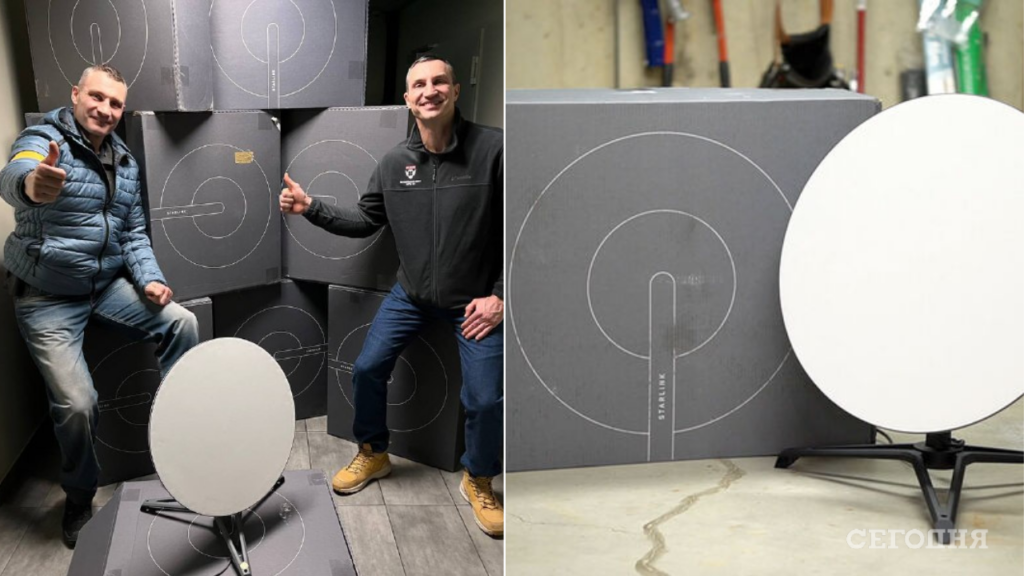
As for individuals, on April 20, the Minister of Digital Transformation Mykhailo Fedorov announced that the regulator in the field of electronic communications, radio frequency spectrum and postal services allowed Starlink terminals to be used by all categories of users during operation of martial law. In addition, it was announced that Starlink has begun preparations for the opening of a representative office in Ukraine.
The use of Starlink in combat has raised a natural question about its potential vulnerability. It is known that the Russian military tried to silence the signals of the system, but they failed. Threats to shoot down satellites are clearly unrealistic due to their huge number. Given the scale of the group, the only real way to destroy Starlink is to use nuclear weapons in space. And this will be an open declaration of war on the world.
The future of the system and its competitors
Two thousand Starlink satellites, that are already launched, seem like a giant number. But this is only at first glance. As part of the first phase, SpaceX plans to deploy a group of 4,408 spacecraft. The second stage of the system involves the creation of another constellation of 7,518 spacecraft, which will be placed in orbits at an altitude of 330-350 km. These satellites will operate in the V-band.

But SpaceX’s plans go much further. In the future, the company plans to increase the number of active satellites to 42 thousand. This is a huge number. But with SpaceX’s success in reducing the cost of launching and mass-produced devices, it no longer looks as incredible as it did just a few years ago.
Currently, Starlink’s main competitor is the OneWeb system. However, its characteristics are much more modest. Fully deployed, it will consist of 648 satellites. The company managed to launch 428 satellites before breaking off cooperation with Roscosmos. Ironically, it was SpaceX that agreed to help a competitor by taking over the deployment of some of the system’s satellites (the rest will be launched by India). However, the exact timing of their deployment is still unknown.

Theoretically, a more dangerous competitor to Starlink could be the Kuiper system being designed by Amazon. It is planned to create a group of 3,226 devices. Amazon recently signed the agreement of the century, ordering 83 rockets from the ULA, Arianespace and Blue Origin launchers. At the same time, since the Kuiper is planning to use launch systems that has not yet been put in operation, SpaceX will have at least a few more years of odds.
We can also mention the project developed by the Chinese company GalaxySpace. They are planning to create a group of 12,992 satellites. But given the political realities, its commercial prospects in the West are highly questionable. It is much more likely that this system will eventually become part of the “Great Firewall of China.”
So, as of today, Starlink has no real competitors that can threaten its position. Of course, since this is the first such project in history, in some respects the designers of the system have to act by trial and error, which delays its deployment. We should not also forget about the significant technological and financial risks that can still overwhelm the system. After all, Starlink may fail to pay off due to a lack of users.
But still, given the success of the system deployment and the persistence of SpaceX, we can suggest that Starlink well may soon be perceived by ordinary people as something quite ordinary, like the GPS system, which once seemed as fantastic as the global satellite Internet.
Follow us on Twitter to get the most interesting space news in time: https://twitter.com/ust_magazine

